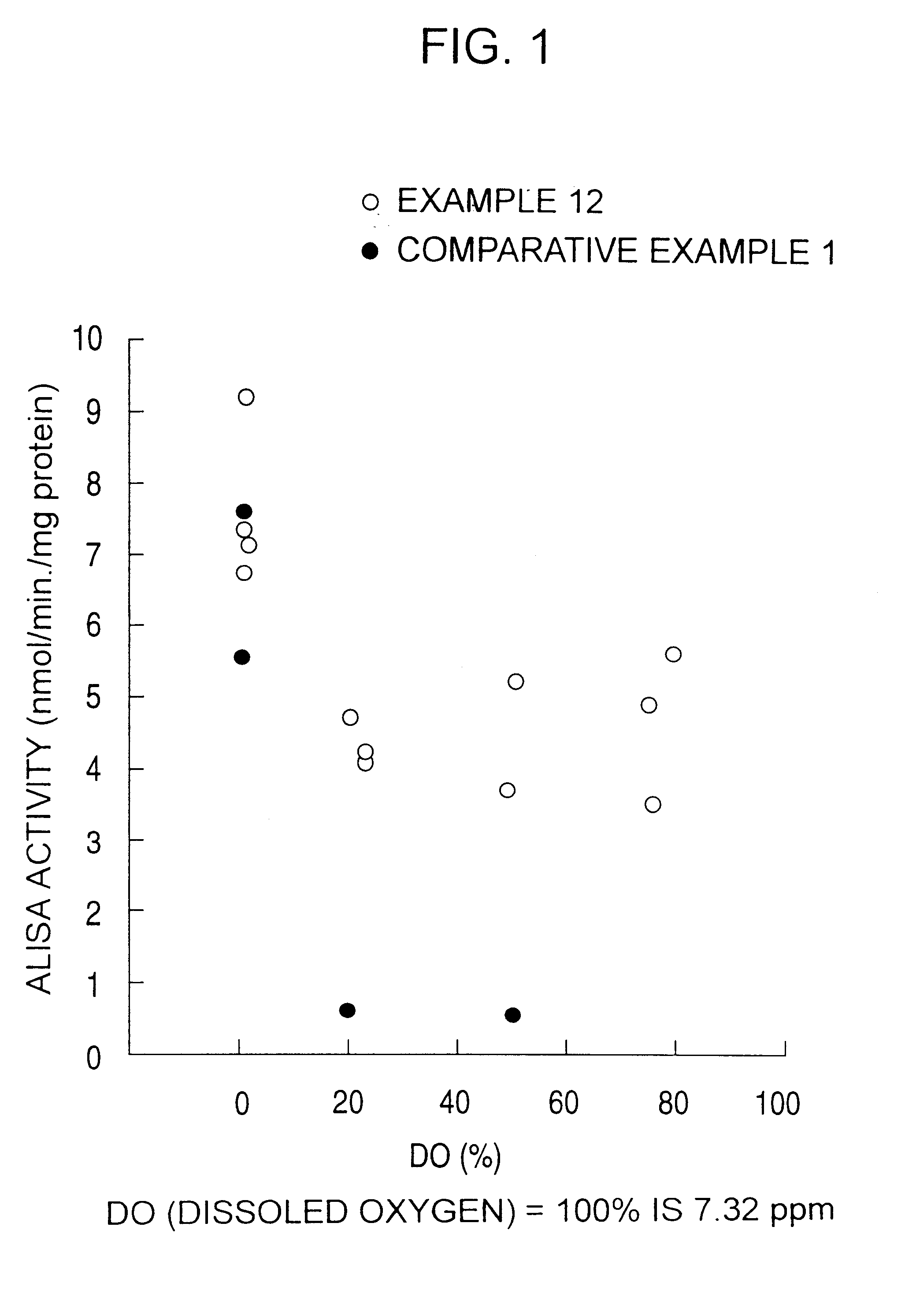Microorganisms producing 5-aminolevulinic acid and processes for producing 5-aminolevulinic acid by using the same
a technology of aminolevulinic acid and process, which is applied in the direction of microorganisms, enzymology, transferases, etc., can solve the problems of lack of practicability for use in the above-mentioned uses, lack of satisfactory processes, and the lik
- Summary
- Abstract
- Description
- Claims
- Application Information
AI Technical Summary
Benefits of technology
Problems solved by technology
Method used
Image
Examples
example 1
Into a 21 mm.phi. test tube, 10 ml of glutamate / glucose medium (medium 1) shown in Table 1 was poured, sterilized at 121.degree. C. for 15 minutes, and then allowed to stand for cooling. One loopful of Rhodobacter sphaeroides CR-002 (FERM P-15312) was inoculated into the medium and cultured under shaking in the dark at 30.degree. C. for 2 days.
Into another 21 mm.phi. test tube, 10 ml of medium 1 was poured and sterilized in the same manner as described above. A 0.5 ml portion of the above culture broth was inoculated into the medium and cultured under shaking in the dark at 32.degree. C. for 18 hours.
TABLE 1 g / L (distilled water) Sodium glutamate 3.8 Glucose 9.0 Disodium hydrogenphosphate 1.13 Sodium dihydrogenphosphate 1.07 Ammonium phosphate 0.8 Magnesium sulfate 0.2 Calcium chloride 0.053 Manganese sulfate 1.2 .times. 10.sup.-3 Nicotinic acid 1.0 .times. 10.sup.-3 Biotin 1.0 .times. 10.sup.-5 Thiamin 1.0 .times. 10.sup.-3 Yeast extract 2.0
The culture broth was centrifuged at 3,00...
example 2
The same procedure of Example 1 was repeated, except that the strain was changed to CR-150 to thereby obtain about 15,000 mutant strains. By subjecting them to selection tests in the same manner as in Example 1, a mutant strain CR-268 having more improved productivity than CR-150 was obtained. When the accumulated amount of 5-aminolevulinic acid was determined by measuring the absorbance of the Ehrlich reaction at 553 nm using a microplate reader, the strain CR-268 showed a productivity of 0.3 mM.
example 3
The same procedure of Example 1 was repeated, except that the strain was changed to CR-268 to thereby obtain about 15,000 mutant strains. By subjecting them to selection tests in the same manner as in Example 1, a mutant strain CR-368 having more improved productivity than CR-268 was obtained. When the accumulated amount of 5-aminolevulinic acid was determined by measuring the absorbance of the Ehrlich reaction at 553 nm using a microplate reader, the strain CR-368 showed a productivity of 0.5 mM.
PUM
| Property | Measurement | Unit |
|---|---|---|
| Fraction | aaaaa | aaaaa |
| Fraction | aaaaa | aaaaa |
| Molar density | aaaaa | aaaaa |
Abstract
Description
Claims
Application Information
 Login to View More
Login to View More - R&D
- Intellectual Property
- Life Sciences
- Materials
- Tech Scout
- Unparalleled Data Quality
- Higher Quality Content
- 60% Fewer Hallucinations
Browse by: Latest US Patents, China's latest patents, Technical Efficacy Thesaurus, Application Domain, Technology Topic, Popular Technical Reports.
© 2025 PatSnap. All rights reserved.Legal|Privacy policy|Modern Slavery Act Transparency Statement|Sitemap|About US| Contact US: help@patsnap.com


